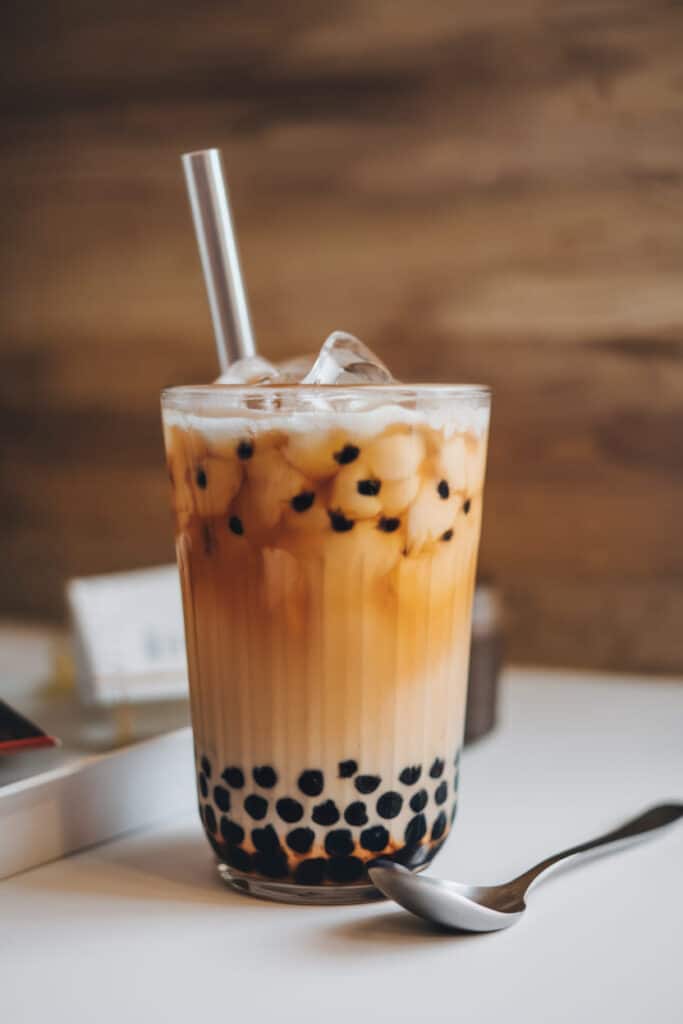Where is Boba Tea From? Exploring the Origins of This Global Sensation
Boba tea, also known as bubble tea, has taken the world by storm in recent years, becoming a staple in cafes and a favorite treat for millions. But have you ever wondered where this trendy drink comes from? The story of boba tea is a fascinating journey that takes us back to Taiwan, where it all began. In this article, we’ll uncover the roots of boba tea, the history behind its iconic tapioca pearls, and why it’s more than just a drink – it’s a cultural phenomenon.
The Birthplace of Boba Tea: Taiwan
Boba tea originated in Taiwan during the 1980s. While there’s some debate over who invented it first, the general consensus is that it began in Taiwanese tea houses. Taiwan’s vibrant tea culture played a significant role in its development, as tea has always been a cornerstone of Taiwanese tradition.
How It All Started
The original version of boba tea was simply milk tea – black tea mixed with milk and sugar. This beverage was already popular among tea drinkers in Taiwan. The game-changing addition came when tapioca pearls, made from cassava starch, were added to the drink. The chewy texture of the pearls created a unique experience that quickly captivated locals.
Two tea shops often claim to be the birthplace of boba tea: Chun Shui Tang in Taichung and Hanlin Tea Room in Tainan. Each shop has its own story about how they added tapioca pearls to tea, but regardless of who started it, the drink quickly spread across Taiwan and later the globe.
What Are Tapioca Pearls?
The signature feature of boba tea is, of course, the tapioca pearls. These small, chewy balls are made from tapioca starch, which comes from the cassava plant. Tapioca pearls are flavorless on their own, but when cooked and sweetened, they become soft, chewy, and incredibly satisfying.
Brown Sugar Boba: A Modern Twist
One of the most popular variations of boba tea today is brown sugar boba milk tea. In this version, the tapioca pearls are cooked with caramelized brown sugar syrup, giving them a rich, sweet flavor and a glossy, dark color. The pearls are then layered with fresh milk and more brown sugar syrup, creating a visually stunning drink with stripes of caramelized sugar.
Brown sugar boba milk tea has become a fan favorite for its decadent taste and Instagram-worthy appearance. This version pays homage to the classic tapioca pearls while adding a contemporary flair that appeals to modern tastes.
The Evolution of Boba Tea
From Taiwan to the World
What started as a local treat in Taiwan soon found its way overseas. In the 1990s, Taiwanese immigrants brought boba tea to countries like the United States, Canada, and Australia. It quickly gained popularity in cities with large Asian communities, such as Los Angeles, San Francisco, and New York.
Today, boba tea is a global phenomenon, with cafes and tea shops dedicated entirely to crafting unique variations. From fruity flavors to decadent desserts, boba tea has evolved far beyond its humble beginnings. But at its core, the drink remains a celebration of its Taiwanese roots.
Key Ingredients That Define Boba Tea
At its heart, boba tea is a simple yet versatile drink. Let’s break down the core components:
- Tea Base
Traditional boba milk tea uses black tea as its base, but green tea and oolong tea are also popular choices. These teas provide a rich, aromatic foundation for the drink. - Milk
The “milk” in boba milk tea can be anything from fresh dairy milk to plant-based alternatives like almond, soy, or oat milk. Each type of milk adds its own flavor profile. - Sweeteners
Sweetness is a key part of boba tea’s appeal. Common sweeteners include simple syrup, honey, or the increasingly popular brown sugar syrup. - Tapioca Pearls
The chewy pearls are the soul of boba tea, offering a satisfying texture that complements the smoothness of the tea. - Optional Add-Ins
Over the years, boba tea has seen the addition of other toppings like jelly, popping boba (juice-filled pearls), and even cheese foam.
Boba Tea as a Cultural Icon
Boba tea is more than just a drink – it’s a cultural symbol of Taiwan’s creativity and adaptability. It has also become a marker of youth culture and social connection, with boba tea shops often serving as popular hangout spots. The drink’s playful and customizable nature resonates with younger generations, making it a staple of pop culture.
Even in non-Taiwanese communities, boba tea has created a bridge between cultures. Its popularity has introduced millions to the flavors and traditions of Taiwan, sparking curiosity and appreciation for its rich heritage.
Why Boba Tea Continues to Thrive
The enduring popularity of boba tea can be attributed to its versatility and innovation. From classic milk tea to trendy brown sugar boba, there’s a flavor for everyone. Its ability to adapt to regional preferences – such as matcha boba in Japan or mango boba in tropical regions – ensures its global appeal.
Additionally, the rise of social media has played a significant role in boba tea’s popularity. The drink’s aesthetic appeal – think colorful layers, swirling syrups, and oversized straws – makes it a hit on platforms like Instagram and TikTok.
Boba tea’s journey from the tea houses of Taiwan to the global stage is a testament to its unique charm and adaptability. With its combination of traditional roots and modern innovations, it’s no wonder this iconic drink continues to capture hearts worldwide.

